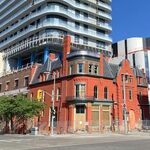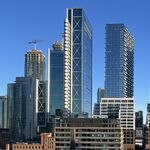SunriseChampion
Senior Member
I'm 25. If that bloody thing is still standing when I'm on my death bed, I may or may not die happy. It's one of only two things that truly bother me about Toronto. There's nothing good about it. Nothing. If traffic flow is of such serious concern then where the hell is the Spadina Expwy and the continuation of the Gardiner along where Kingston Road now lies? Can we build those now please? Do you know what they would do to alleviate congestion, oh my!




